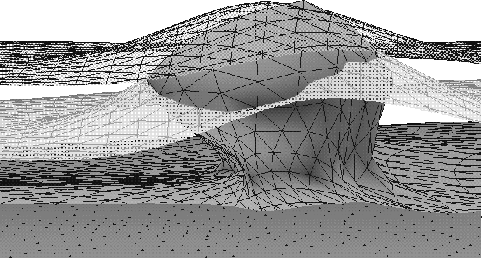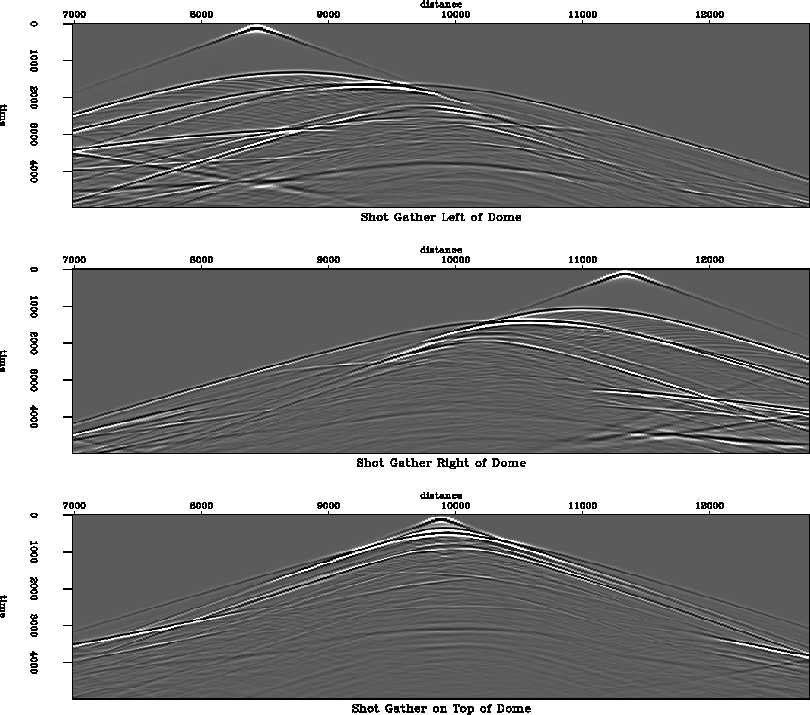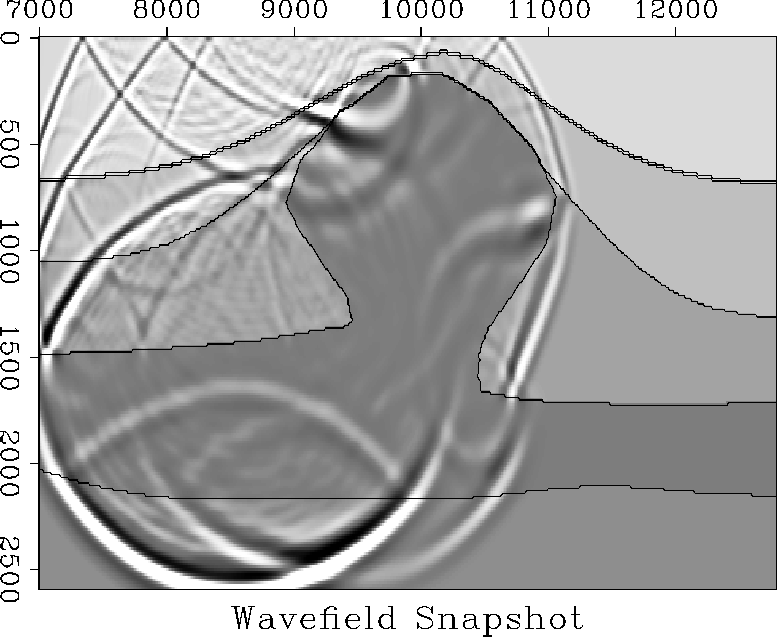




Next: A PROPOSAL FOR A
Up: Berlioux: 3-D grid with
Previous: How to fill a
Figure 3 represents a model of a salt dome that pierces the
two interfaces situated above the salt layer.
diapcut
Figure 3 Diapir model used to build the 3-D grid.

A model with 200 gridpoints in depth and 464 gridpoints in horizontal
distance is written out of GOCAD and fed into a finite-difference modeling
program Karrenbach (1992). Figure 4 shows the subsurface
model. It consists of homogeneous sedimentary layers that are uplifted and
intruded by a salt body, a classic diapir. We use a pressure source in an
acoustic medium and collect the z-component of the displacement on the free
surface of the model. The wavelet is a derivative of a Gaussian function
with a fundamental frequency of 40Hz. Figure 5 shows
z-component seismograms collected left, on top and right of the diapir.
As explained previously, the gridding quality depends partly
on the smoothness of the model interfaces. We can see some diffractions
caused by stair-stepping of the first layer interface in Figure 4.
During the wave propagation, the corners of those steps will act as
diffraction points. In Figure 6,
the snapshot of the z-component of the wave field,
those outward propagating diffraction circles are clearly visible.
On the seismograms, those diffraction points manifest themselves as
hyperbolae suspended from the main reflection hyperbola. To watch
the movie of those snapshots press the button at the end of the figure
caption in Figure 6.
diap
Figure 4 Gridded output of the diapir model. Press
button to sweep through the 3-D model cube.




 zseis
zseis
Figure 5 Three shot gathers collected over the diapir model.




 over.left
over.left
Figure 6 Snapshot of the wavefield at elapsed time
1.5 sec. Press button for a complete movie.










Next: A PROPOSAL FOR A
Up: Berlioux: 3-D grid with
Previous: How to fill a
Stanford Exploration Project
11/17/1997




